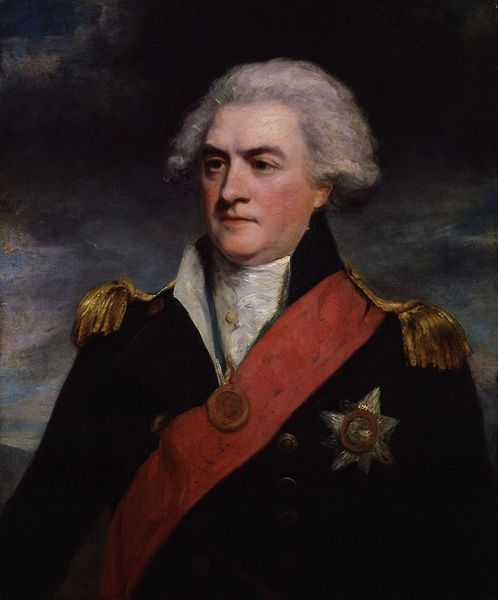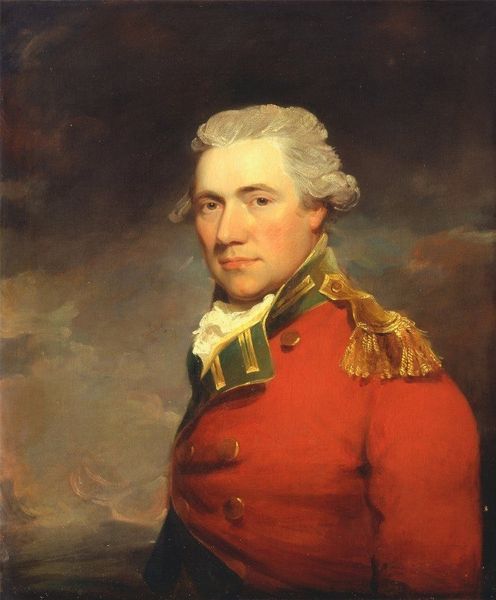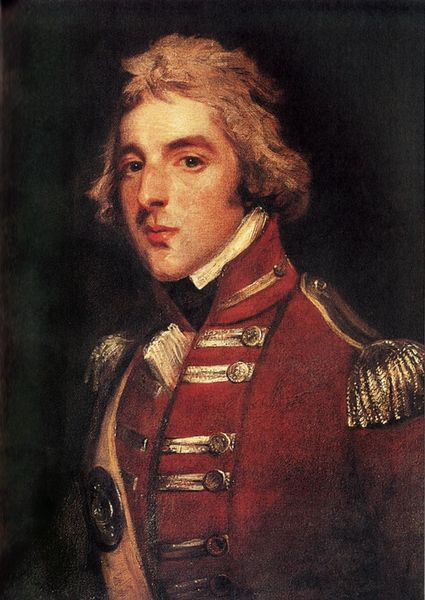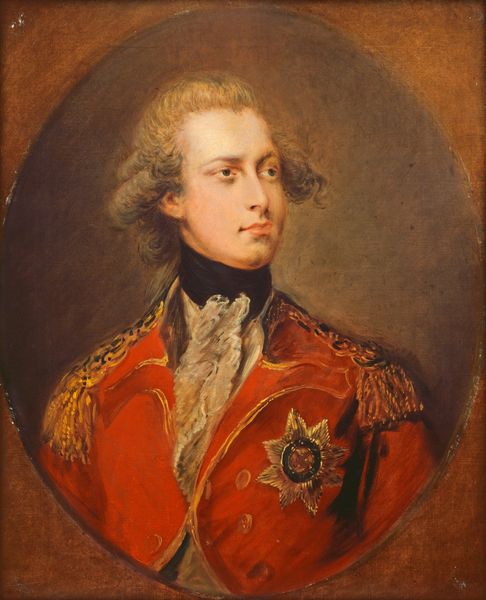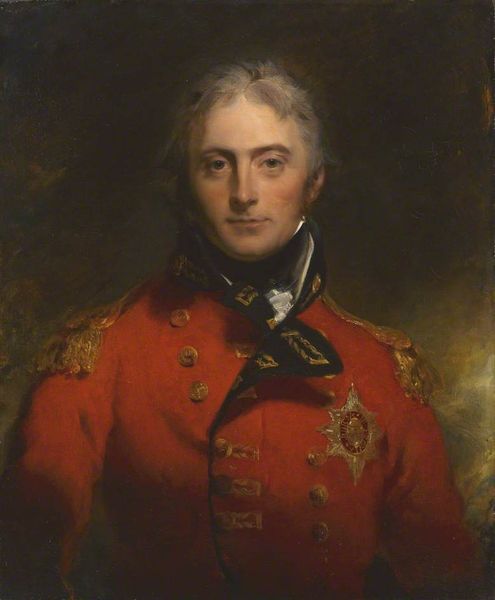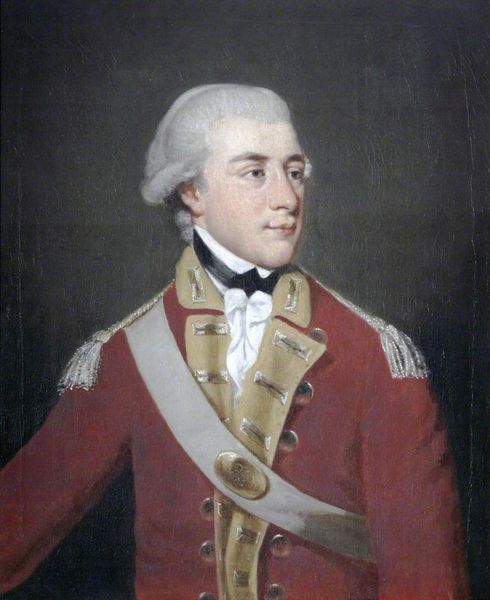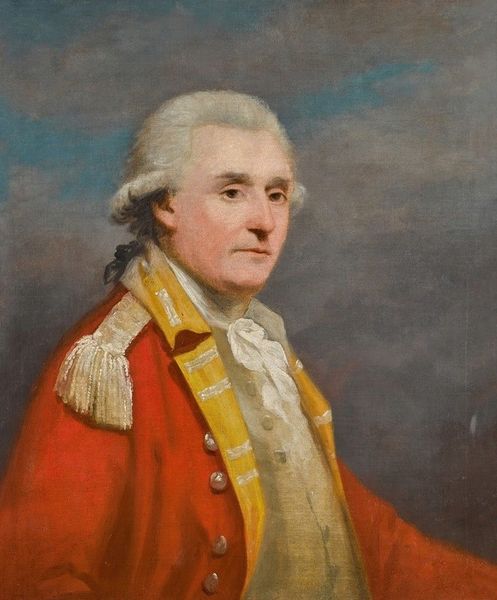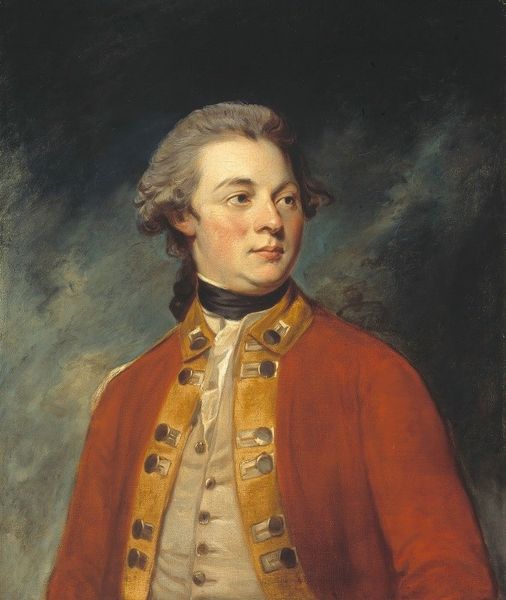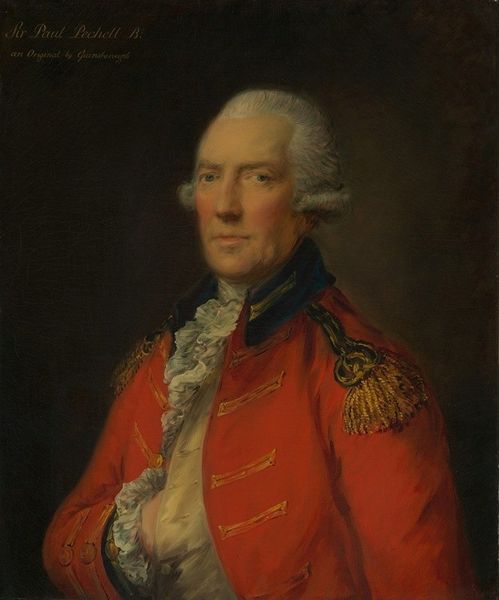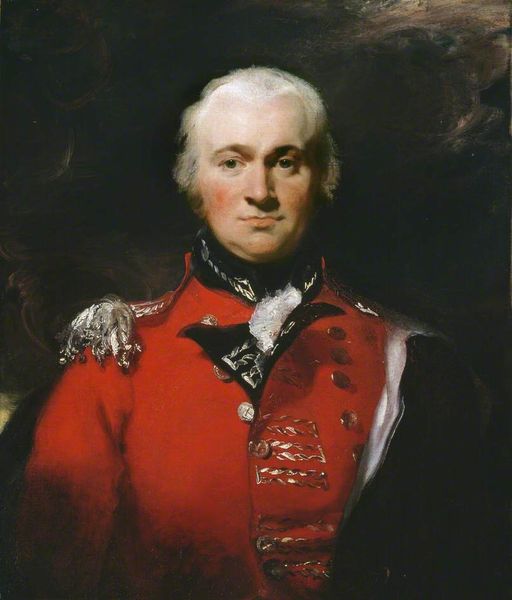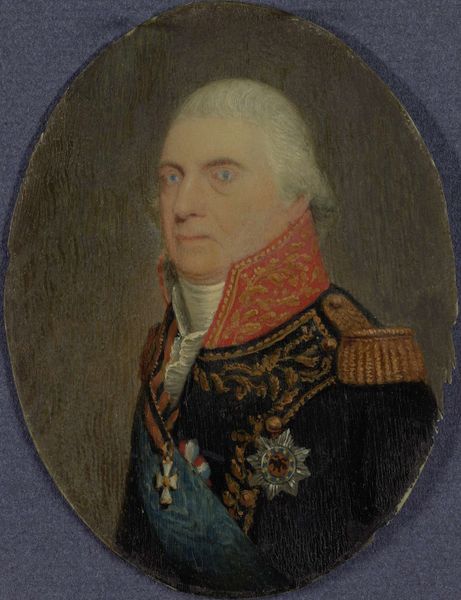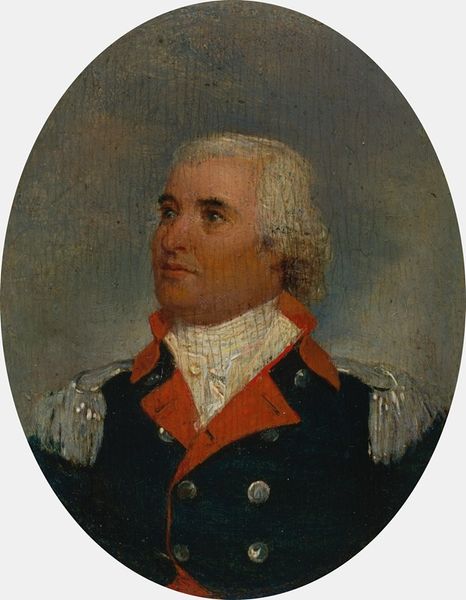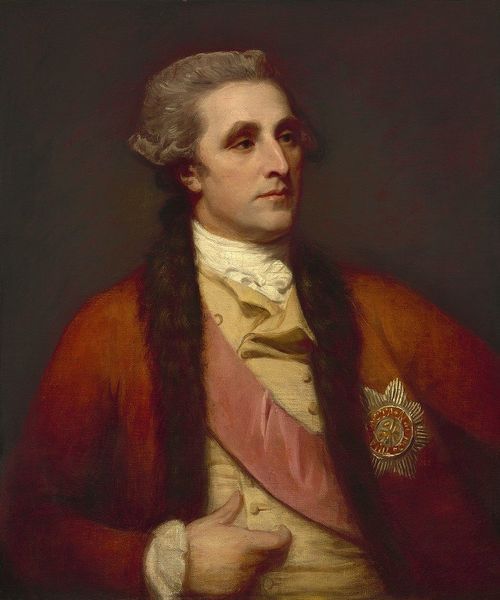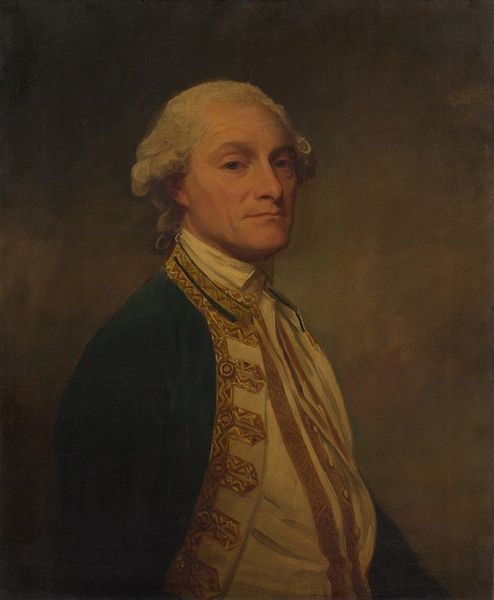
painting, oil-paint
#
portrait
#
painting
#
oil-paint
#
romanticism
#
history-painting
Copyright: Public Domain: Artvee
Editor: Here we have John Hoppner’s "Major Thomas Pechell," created around 1799, using oil paint. I’m struck by the redness, particularly the almost overwhelming crimson of his uniform, which seems to command the viewer’s attention. What strikes you about this portrait? Curator: Immediately, I consider the material implications of that red pigment. Where did this shade come from? Was it an expensive import, cochineal perhaps, signaling wealth and status not just through Pechell's military role, but through the very stuff of the painting? The Romantic style often idealizes the subject, but the material production brings this piece crashing down to earth; what processes allowed the manufacturing, distribution and commercial access of that colour? Editor: So, the red isn't just a color choice, it's tied to global trade? I hadn't considered that! Do you think the process used informs the artist’s choice to portray this particular subject? Curator: Absolutely. Hoppner was a society portraitist. He likely had access to increasingly refined pigments that shaped the look and feel of aristocracy. It’s a relationship – Hoppner benefited financially from those he painted, and they received an image in which new colours advertised social rank and political prowess. Can the viewer disengage colour choice from the power structures prevalent at that time? What could an analysis like that say about military portraits today, for example? Editor: It’s interesting to think about how access to these types of technologies affected painting in general. Thinking about how certain materials define wealth at certain points of history is helpful to see in the subject itself as well. Curator: Indeed. Seeing beyond the subject’s expression helps in understanding both his world, the artist’s world, and the painting’s place as a crafted object within it. Editor: Right, I now consider portraits as almost manufactured goods representative of societal demands instead of only an aesthetic form of fine art.
Comments
No comments
Be the first to comment and join the conversation on the ultimate creative platform.
